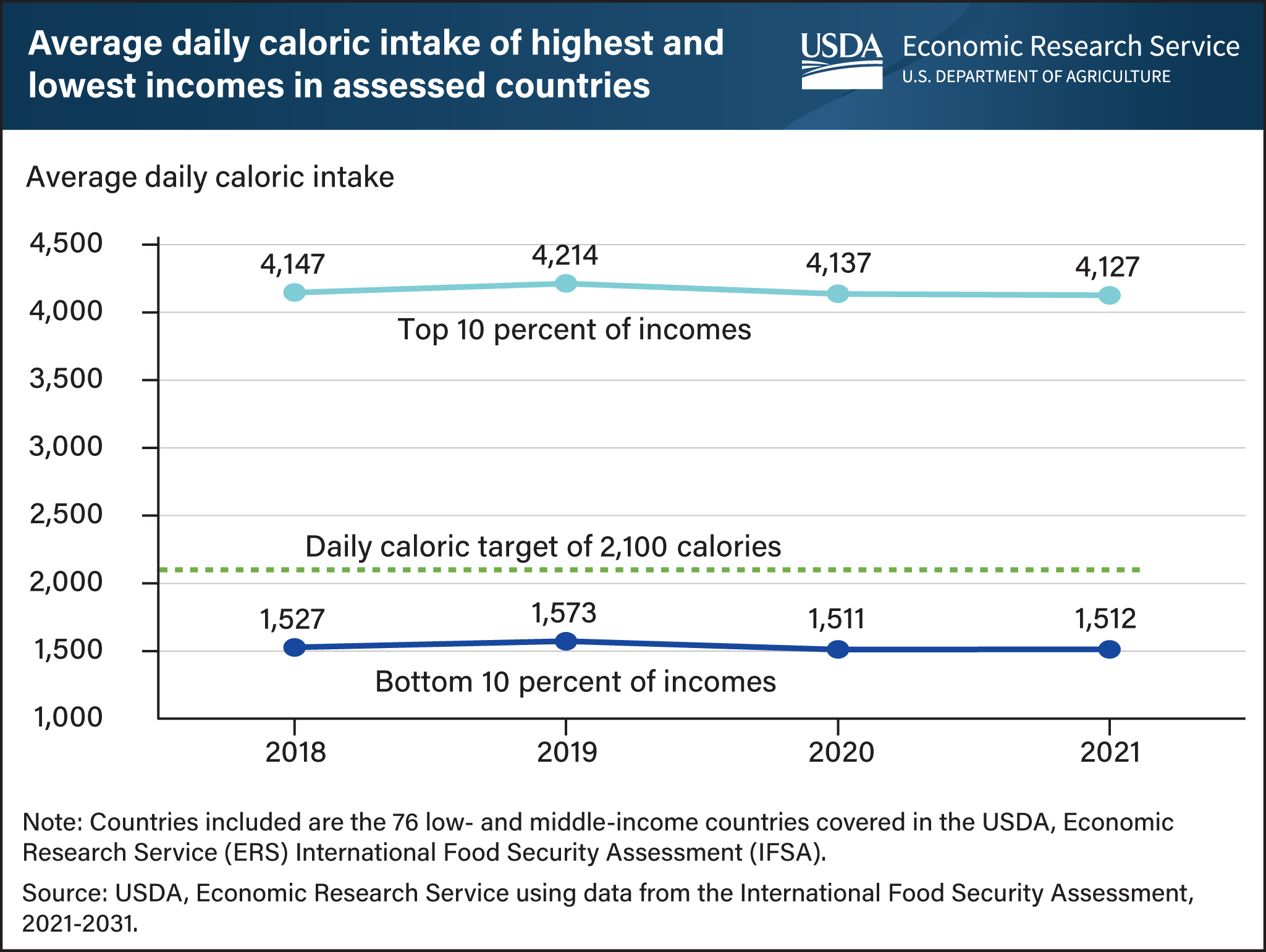World’s most vulnerable populations consumed fewer calories a day during pandemic
- by Felix G. Baquedano
- 10/15/2021

Globally, food insecurity—defined as lacking access to at least 2,100 calories per day—has intensified during the Coronavirus (COVID-19) pandemic. The world’s poorest populations experienced a reduction in consistent access to food and increased food insecurity, in part because of pandemic-related income shocks. In the 76 low- and middle-income countries covered in USDA, Economic Research Service’s (ERS) International Food Security Assessment (IFSA), average daily caloric consumption for the 10 percent of these countries’ population with the lowest income fell by 3.9 percent, or 62 calories per day, in 2020 relative to 2019. Access to food for the wealthiest 10 percent of the 76 countries’ population was also affected, with daily caloric intake falling by 1.8 percent, or 77 calories, year to year. In part because of the persistent effects of COVID-19 on income levels, the number of food-insecure people in 2021 is estimated at 1.2 billion, an increase of 32 percent, or 291 million people, from the 2020 estimate. This suggests that in 2021, nearly one-third of the population of the countries included in the IFSA study will lack access to sufficient food to reach the daily nutritional target of 2,100 calories set by the Food and Agricultural Organization of the United Nations. This chart is drawn from the USDA, ERS International Food Security Assessment, 2021-31.

